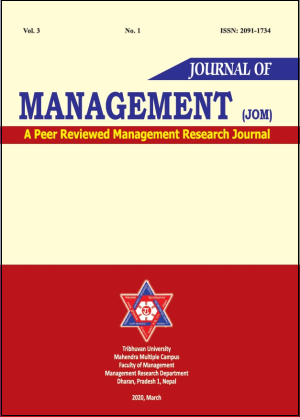Status of Production and Distribution of Fresh Milk by Villagers in Bariyarpatti, Sohpur
DOI:
https://doi.org/10.3126/jom.v3i1.30918Keywords:
frewsh milk, production, distribution, villagers, rural areaAbstract
The study specially focused on production and distribution of fresh milk in ‘Bariyapatti’ Rural Municipality. Sohapur village, where number of local people visit daily in order to buy fresh milk. Milk is good for the bones because it offers a rich source of calcium, a mineral essential for healthy bones and teeth. It reduces blood pressure which also benefits bone health. The main objective of the study is to explore and analyse the status of production and distribution of fresh milk by villagers in Bariyarpatti Rural Municipality ward No. – 04, Sohpur. The study is based on descriptive research design. Primary data collection tools i.e. observation, questionnaire method and direct interview method is used. The study concludes that the milk supplier of the village are facing the problem of supply fluctuation due to the improper management of milk production by the villagers and selling situation of fresh milk. The trading place for trading milk is not appropriate. Despite large number of cows and buffalo populations, the proportion of milking animals has remained low. Indicating a large number of ‘unproductive’ animals. The existing suppliers are not focusing on quality of milk, the quality of milk refers that they mix water with the fresh milk. Through improving in timely collecting money, considering hygiene factors and using cows to produce milk rather than buffalos can benefit for the supplier of milk.
Downloads
Downloads
Published
How to Cite
Issue
Section
License
© Management, Research Department, Faculty of Management, Mahendra Multiple Campus, Dharan, Nepal

